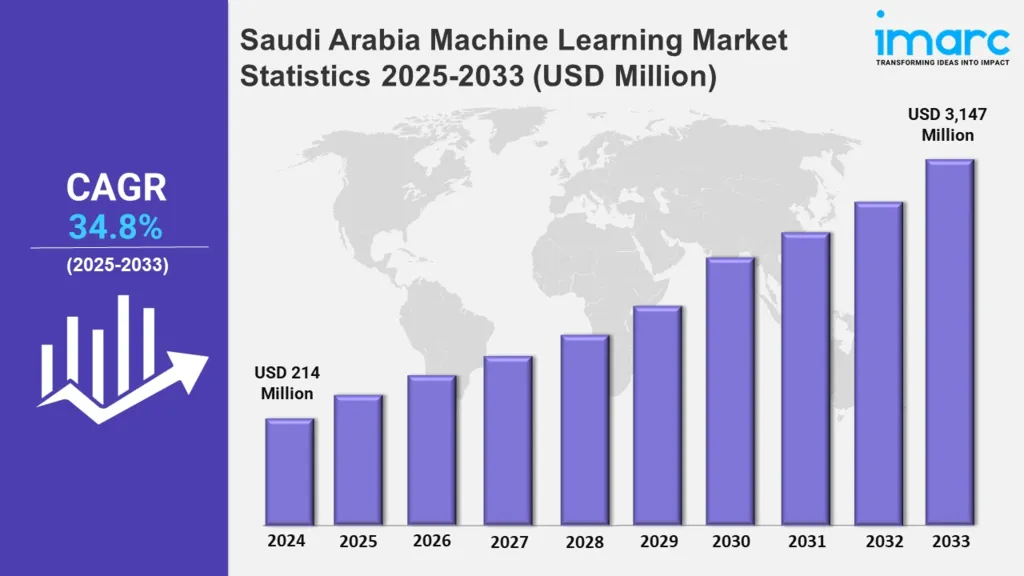Machine Learning Revolutionizing M&A Strategy in Saudi Arabia
Mergers and acquisitions (M&A) are high-stakes decisions that can make or break a company’s future. For years, businesses have relied on traditional methods like financial reports and expert opinions to guide their M&A strategies. But now, Saudi Arabia is embracing a new ally in this complex process: machine learning.
By analyzing massive amounts of data, predicting outcomes, and identifying potential risks, machine learning in M&A is not only improving decision-making but also reshaping how deals are structured. This cutting-edge technology is giving Saudi businesses a powerful tool to stay competitive in an ever-evolving market.
Predicting Outcomes with Machine Learning
The success of an M&A deal often hinges on predicting the future. Will the merged companies generate the anticipated synergies? Are there hidden liabilities that could derail the partnership? Machine learning algorithms can answer these questions by analyzing vast datasets that human analysts simply can’t process at the same speed or scale.
For example, platforms like DealCloud use machine learning to predict deal outcomes. These algorithms factor in market trends, financial performance, and even historical transaction data to provide a comprehensive risk-reward analysis. Armed with this information, Saudi businesses can approach deals with greater confidence and clarity.
According to research from the University of Wisconsin-Madison School of Business, machine learning models like random forests and neural networks have demonstrated up to six times greater predictive accuracy compared to traditional methods like logistic regression in analyzing M&A data. In high-stakes environments like mergers and acquisitions, this level of precision can make the difference between a successful deal and a missed opportunity.
Identifying Risks Before They Escalate
Risk assessment is one of the most time-consuming aspects of the M&A process. Traditionally, it involves poring over financial statements, contracts, and compliance records—a process prone to human error and oversight. Machine learning streamlines this by scanning and analyzing data for anomalies, red flags, and patterns indicative of risk.
For instance, solutions like Intralinks employ machine learning to identify discrepancies in financial records, detect patterns of non-compliance, and flag legal risks. This proactive approach enables dealmakers in Saudi Arabia to address issues early, ensuring smoother negotiations and fewer surprises post-acquisition.
As the Kingdom continues to attract foreign investments and execute complex transactions, such tools are becoming indispensable in navigating the intricacies of cross-border and high-value deals.
Enhancing Decision-Making in the M&A Sector
M&A transactions involve countless moving parts, from valuation assessments to negotiations and post-merger integration. Machine learning tools help simplify these processes by automating repetitive tasks and offering actionable insights.
Platforms like Ansarada leverage AI to automate due diligence, enabling faster document reviews and real-time updates on deal progress. This not only saves time but also allows decision-makers to focus on the bigger picture: crafting a strategy that aligns with their business goals.
In Saudi Arabia, where the M&A landscape is becoming increasingly competitive, the ability to make swift, informed decisions is a significant advantage. Whether it’s evaluating acquisition targets or planning integration strategies, machine learning equips businesses with the insights they need to act decisively.
Also Read: How AI Can Boost Deal Success Rate by 20% in Saudi M&A
The Growing Market for AI in M&A

The rapid adoption of AI technologies in Saudi Arabia is evident in its market growth. The machine learning market in the Kingdom is projected to expand from USD 214 million in 2024 to USD 3.147 billion by 2033, reflecting a compound annual growth rate (CAGR) of 34.8%.
This growth mirrors Saudi Arabia’s broader economic transformation under Vision 2030, which emphasizes innovation and diversification. By integrating machine learning into M&A strategies, the Kingdom is not only enhancing its competitiveness but also paving the way for more efficient and successful transactions.
The Future of Machine Learning in Saudi Arabia’s M&A Landscape
As the machine learning market continues to grow, its applications in M&A are set to expand. Here’s what the future could hold:
- Hyper-Personalized Deal Strategies: Machine learning could tailor strategies to individual industries or even specific companies, ensuring optimal outcomes.
- Real-Time Market Insights: With advancements in real-time analytics, businesses could react instantly to market changes, adjusting their M&A strategies on the fly.
- Smarter Post-Merger Integration: AI can help identify cultural and operational synergies between merging companies, making integration smoother and more effective.
Saudi Arabia’s commitment to innovation positions it as a leader in adopting these cutting-edge technologies. As businesses continue to embrace machine learning, the Kingdom’s M&A landscape will become more dynamic, resilient, and forward-thinking.
Conclusion
Machine learning is more than just a trend in Saudi Arabia’s M&A sector—it’s a transformative tool that is redefining how businesses approach mergers and acquisitions. By predicting outcomes, identifying risks, and streamlining decision-making, machine learning in M&A is helping Saudi companies close better deals faster.
As the machine learning market in Saudi Arabia grows at an impressive rate of 34.8% annually, its impact on the M&A sector will only deepen. For businesses ready to embrace this technology, the future is one of endless opportunities.






